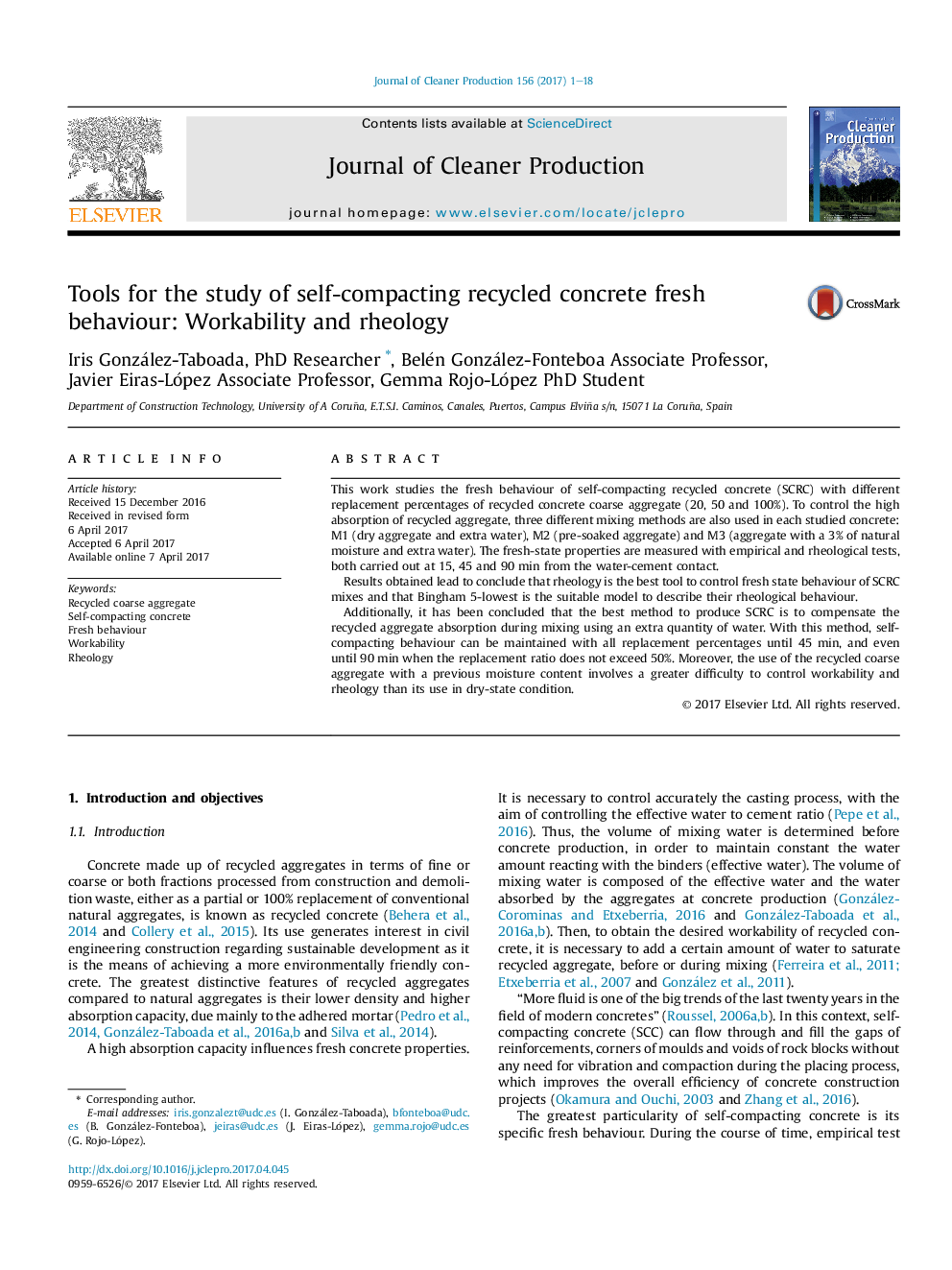| Article ID | Journal | Published Year | Pages | File Type |
|---|---|---|---|---|
| 5480959 | Journal of Cleaner Production | 2017 | 18 Pages |
â¢Self-compacting recycled concrete (SCRC) fresh behaviour was studied using workability and rheology as tools.â¢The time-dependent evolution of SCRC fresh parameters was also studied.â¢The most suitable percentages and mixing methods to achieve an accurate SCRC were determined.â¢The Bingham 5-lowest rheological model was seen to be suitable to describe SCRC as a fluid.
This work studies the fresh behaviour of self-compacting recycled concrete (SCRC) with different replacement percentages of recycled concrete coarse aggregate (20, 50 and 100%). To control the high absorption of recycled aggregate, three different mixing methods are also used in each studied concrete: M1 (dry aggregate and extra water), M2 (pre-soaked aggregate) and M3 (aggregate with a 3% of natural moisture and extra water). The fresh-state properties are measured with empirical and rheological tests, both carried out at 15, 45 and 90Â min from the water-cement contact.Results obtained lead to conclude that rheology is the best tool to control fresh state behaviour of SCRC mixes and that Bingham 5-lowest is the suitable model to describe their rheological behaviour.Additionally, it has been concluded that the best method to produce SCRC is to compensate the recycled aggregate absorption during mixing using an extra quantity of water. With this method, self-compacting behaviour can be maintained with all replacement percentages until 45Â min, and even until 90Â min when the replacement ratio does not exceed 50%. Moreover, the use of the recycled coarse aggregate with a previous moisture content involves a greater difficulty to control workability and rheology than its use in dry-state condition.
